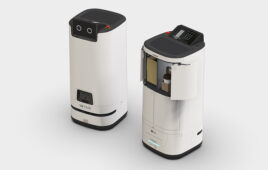|
Listen to this article
|

Cruise is restarting operations in Phoenix, but not in San Francisco where the company is based. | Source: Cruise
After a bumpy end to 2023, Cruise, the self-driving unit of GM, is restarting manual driving in Phoenix. Cruise says the goal is to eventually resume driverless operations, but humans will be doing all of the driving for now. Restarting in manual mode is an important step, the company says.
Interestingly, Cruise is restarting manual operations in Phoenix, not in its hometown of San Francisco, where the company has been based since it was founded in 2013. Cruise has long had its sights set on deploying its driverless robotaxis in San Francisco. It has said the city’s difficult driving conditions will prepare its autonomous driving system for any other city. When it first began public operations, it started in San Francisco.
In October 2023, however, California revoked the company’s California permits, claiming Cruise withheld footage in an October 2 incident. Cruise disputes that it withheld footage or information from the DMV, but it paused all of its operations nationwide to reestablish trust with the public.
Since then, the city of San Francisco has filed a lawsuit against the California Public Utilities Commission (CPUC), the organization responsible for regulating autonomous vehicles in the state, to drastically reduce the number of robotaxis on the city’s roads.
Now, the company says it’s starting manual operations to create maps and gather road information. This work is done using human-driven vehicles without autonomous systems engaged. Cruise says this is a critical step for validating its self-driving systems as it works towards returning to its driverless mission, and that this information will help it decide where it will ultimately resume driverless operations. This leaves it unclear if or when Cruise’s robotaxis will return to San Francisco.
How Cruise prepared for restarting public operations
Cruise says over the past several weeks it has communicated with officials, first responders, and community leaders in cities it previously operated in. The company says it’s committed to deploying its technology safely, and it has implemented the following measures to do so:
- The company established new leadership and engaged more closely with GM advisors to support safety, legal, regulatory, and communications functions. Kyle Vogt and Dan Kan, co-founders of Cruise, resigned as CEO and chief product officer, respectively, in November.
- Cruise hired a chief safety officer, Steve Kenner, to guide improved safety processes and procedures throughout the organization.
- The company established a cross-disciplinary regulatory team to guide engagement with regulators regarding incident reporting.
- Finally, Cruise reviewed and strengthened key internal safety governance processes to incorporate more robust cross-functional review and leadership accountability.
In addition to these measures, Cruise says it is working to establish systems and processes for ensuring safe operations across the company. This includes reforming and updating its incident response and crisis management protocols, renewing internal training and reinforcing safety culture systems, reevaluating and reestablishing its safety targets for supervised and driverless operations, and engaging with first responders to facilitate ongoing training in the areas it operates in.
Road to driverless operations
Cruise’s autonomous vehicle (AV) stack learns from information gathered through driving. The tech learns from every intersection, construction zone, and road sign it encounters, and applies that knowledge to other environments and scenarios.
Cruise continued testing in simulated environments and closed courses over the past few months, and now the company is focusing on building semantic maps and gathering road information. This will help it meet elevated safety and performance targets and prepare it for driverless operations in the future.
Before driverless operations can start, Cruise says it needs to identify high-fidelity location data for read features and map information like speed limits, stop signs, traffic lights, lane paint, right-turn-only lanes, and more. This data will help Cruise’s AVs understand where they are and the location of certain road features.
Once this stage is done, Cruise will validate its AV’s end-to-end performance against its safety and AV performance requirements through supervised autonomous driving on public roads. During this phase, Cruise vehicles will drive themselves with a safety driver behind the wheel to take over if needed. Cruise says it will move to driverless operations once this phase is completed.







Tell Us What You Think!